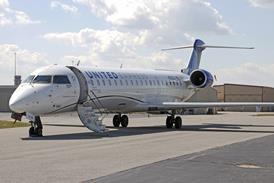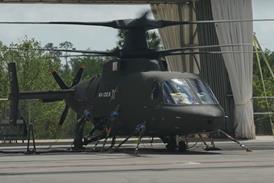As the world’s most prolific aircraft manufacturer announces more sales this afternoon, Jeffrey Decker catches up with the man behind the Cessna success story
The CJ4 is in test flights, the XLS+ is rolling off Cessna’s production line, the Columbus is for sale and the high-performance pistons of a former competitor are sold today as the Cessna 350 and 400.
With so much development, can Cessna keep up its plans for a new aircraft every year? And might the next new aircraft be powered by piston engines or jets? “How about both?” says chairman and CEO Jack Pelton. “We’ve got a lot of other products in the works and it will just be a matter of the appropriate timing.”
Those aircraft will serve a growing global customer base that continues to shift dependence off US orders. In 2007, Cessna delivered 1,272 aircraft, including 387 Citation business jets. The Wichita, Kansas-based manufacturer reported revenues of about $5 billion and a record backlog of $14.5bn.

“Europe has been the strongest international growth market,” says Pelton, “It’s really expanded beyond the traditional Western European market and into Eastern Europe and Russia.” Expect announcements from that region soon, he said. “We don’t see that slowing down. We see that expanding to the east and the Middle East.”
At some point soon, he believes, the customer base in these regions will rival that of North America. “The key there is having the necessary infrastructure to support that kind of growth.”
Malaysia is on Cessna's list, says a spokesperson, adding that ambitious service hub to its Jet Aviation authorised service centres in Japan and Singapore. “We are in the process of adding facilities in Malaysia, India, China and possibly one in Hong Kong. No specific dates have been set, but we are striving to have at least two or three facilities in place by the end of the second quarter and would like to have all in place by year-end. Our goal is to stock parts to support the aircraft we know are based near the maintenance facilities.”
Latin American sales continue to grow, Pelton adds: “The economy is doing very, very well and that always bodes well for bus and general aviation.” The Mustang is doing well there, he says, apparently pulled upward by Brazil’s economic success and the strong authorized sales centre there. “We have a strong relationship with TAM in Brazil, it goes back many, many years.”
Pilot training infrastructure is also growing, particularly in Asia. “In China we’ve sold an awful lot of Cessna 172s into a training university, which are helping them with their needs for initial pilot training. We have some other contracts underway. We have one in India we’re working on a couple of others. It’s not in the conventional sense of a Cessna Pilot Centre. It’s more working with people in-country with training schools in which we’ll participate, and we’ll lend our training curriculum if need be.”
Engineers and production personnel are being trained at Shenyang Aircraft Corp. in China to produce the new SkyCatcher Light Sport Aircraft, and “They are beginning to build some of the tools needed for assembly,” Pelton says. The first production model flew on May 1, about eight weeks after the first prototype SkyCatcher’s maiden flight.
There has also been one major setback. The insolvency of German engine supplier Thielert Group in the wake of an accounting scandal, has forced Cessna to delay delivery of the first factory-installed diesel-powered aircraft by at least six months.
Cessna and Thielert Aircraft Engines GmbH had accumulated more than 200 hours on a Skyhawk prototype, intending to earn a European Aviation Safety Agency (EASA) certification for the supplemental type certificate before first deliveries this summer. Cessna communications director Doug Oliver explains: “We can only sit back now and watch the situation before deciding anything final.”
Pelton says Thielert’s assets could yet contribute, even if it’s not exactly a FADEC-equipped Thielert Centurion 2.0s liter turbo engine. “I don’t see Cessna buying them, but we’ve been in contact with other companies that are very interested in potentially buying Thielert. We’re very interested in the product but we’re going to make sure they have a path forward,” he says.
A separate bankruptcy bolstered Cessna’s piston ranks after the December purchase of Columbia Aircraft. The 350 and 400 high performance composite four-seaters have given Cessna direct competitors against the growing sales of Cirrus.
Production is running at the former Columbia site in Bend, Oregon, and employment is back above 400 people there. “Everybody has migrated onto our benefits and payroll programmes. All of the customer support has been migrated into a single operation out of Wichita,” says Pelton. “That’s one reason observers ought not look at the old employment numbers in Bend to gauge strength there. We really think it’s irrelevant because one of the things we’d like to change is to make the company in Bend more efficient and profitable, which it has not been in the past.”
It’s unknown whether the 350 and 400 will have a product name alongside the Skyhawk, Skylane and SkyCatcher. “If we do something new with the product family we might look at naming, but nothing for 2008,” he says.
2009 may also see the go-ahead on Cessna’s Next Generation Piston family, which was first revealed in 2006, and which is seeing a redefinition of mission parameters. “Concurrent with the integration of the Cessna 350/400 aircraft into the single-engine product line, Cessna is working on positioning the NGP to fit logically into its product lineup,” the company says.
For blogs, video, pictures, and more news from EBACE 2008, click here.
More news from EBACE 2008
Source: Flight Daily News
















